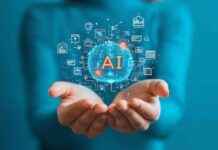Transforming Schools: Lessons from ChatGPT Teachers
Like many new teachers, Ed started his career full of optimism and high hopes. He was eager to be a gamechanger in the education system, believed to be a breath of fresh air capable of engaging even the most disengaged students. Trained to tailor lessons to each child’s individual needs and handle parental inquiries on a wide range of topics, Ed seemed like the ideal candidate to make a difference in the lives of students. However, his career took a turn for the worse as he quickly burned out and was let go by the Los Angeles school district. Ed was not a traditional teacher; he was a $6m AI-powered chatbot designed to act as a personalized learning assistant for children. His short-lived career serves as a cautionary tale on the pitfalls of trying to transform public services using artificial intelligence.
The concept of using technology as a solution to enhance public services has gained traction in recent years. Labour’s plans for revitalizing British public services emphasize the potential of AI to improve efficiency and effectiveness. Keir Starmer has pledged to harness the full potential of AI, while Peter Kyle, the science secretary, believes that automating routine tasks like marking could free up valuable time for teachers to focus on teaching. A report from Tony Blair’s think tank suggests that automating tasks like marking and lesson planning could reduce teaching workloads by 25%, offering significant relief to educators burdened by excessive unpaid overtime.
The vision of using AI to streamline processes and improve public services extends beyond the education sector. The potential cost savings from implementing AI across the public sector are staggering, with estimates suggesting that Britain could save £40bn annually by leveraging AI technology. From processing applications to predicting healthcare needs, the possibilities seem endless. Pilot programs like the one in Somerset, which successfully reduced A&E visits by 60% through data analysis, demonstrate the tangible benefits of integrating AI into public services. However, amidst the promises of increased efficiency and cost savings, there are concerns about the impact of AI on the workforce and the quality of service delivery.
The case of Ed in Los Angeles serves as a cautionary tale for educators and policymakers alike. The rapid pace of technological change in AI has left many schools feeling overwhelmed and uncertain about how to navigate this new terrain. Headteachers have expressed concerns about the lack of regulation and accountability in the digital industry, highlighting the need for transparency and oversight when implementing AI technologies in schools. Peter Kyle’s initiative to train AI on approved lesson plans and pupil assessments is a step in the right direction, but building trust in these tools will require ongoing collaboration and feedback from educators.
While the potential benefits of AI in education are promising, there are challenges that must be addressed to ensure its successful integration into schools. The use of AI for tasks like automated grading and homework assignments can improve efficiency and reduce teacher workload. However, the limitations of AI in tasks requiring critical thinking and human judgment, such as analyzing essays or making life-altering decisions, highlight the importance of maintaining a balance between technology and human expertise. The public’s reluctance to fully embrace AI in sensitive areas like healthcare and social services underscores the need for careful consideration and ethical guidelines in deploying AI solutions.
As we look towards the future of education and public services, it is essential to approach AI integration with caution and foresight. While AI has the potential to revolutionize the way we work and interact with technology, it is crucial to consider the implications for the workforce and the quality of service delivery. The goal of using AI to enhance public services should not come at the expense of human welfare and well-being. By striking a balance between technological innovation and human expertise, we can create a future where AI complements and supports our efforts to transform schools and public services for the better.
Challenges and Opportunities in AI Integration
The integration of AI into education and public services presents both challenges and opportunities for stakeholders. While AI has the potential to streamline processes and improve efficiency, there are concerns about the impact on the workforce and the quality of service delivery. Educators must navigate the complexities of AI integration while ensuring that students receive a high-quality education that meets their individual needs.
One of the key challenges in AI integration is the potential displacement of jobs due to automation. As AI technology advances, there is a risk that certain tasks traditionally performed by humans will be outsourced to machines, leading to job losses in sectors like education and healthcare. While automation can improve efficiency and reduce costs, it is essential to consider the social and economic implications of widespread job displacement.
On the other hand, AI presents opportunities for educators to enhance teaching and learning experiences for students. By leveraging AI tools for personalized learning and assessment, teachers can tailor instruction to meet the diverse needs of their students. AI can also help streamline administrative tasks, allowing educators to focus more on teaching and less on paperwork.
Building Trust in AI
Building trust in AI tools and technologies is essential for their successful integration into education and public services. Educators and policymakers must work together to establish clear guidelines and standards for the ethical use of AI in schools. Transparency and accountability are key principles that should underpin the deployment of AI technologies, ensuring that decisions are made in the best interests of students and the wider community.
Training programs and professional development opportunities can help educators build the skills and knowledge needed to effectively use AI tools in the classroom. By providing teachers with the necessary support and resources, schools can ensure that AI integration enhances, rather than detracts from, the learning experience for students.
Looking Ahead: A Balanced Approach to AI Integration
As we navigate the complexities of AI integration in education and public services, it is essential to adopt a balanced approach that considers the needs of all stakeholders. While AI has the potential to revolutionize the way we work and interact with technology, it is crucial to approach its integration with caution and foresight. By striking a balance between technological innovation and human expertise, we can create a future where AI complements and supports our efforts to transform schools and public services for the better.







